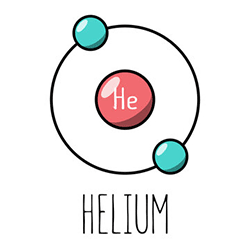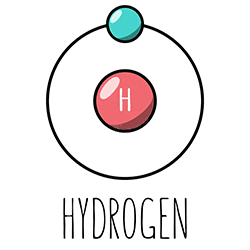Advocacy
Airship Regulatory Framework
Canada has limited experience with airships, whereas European and U.S. policies are moving forward. Existing regulations in the Canadian Air Regulations (CARs) have historically been adapted from the U.S. Federal Aviation Administration (FAA). The European Union Aviation Safety Agency (EASA) proposed a new regulatory framework for the certification of large airships that was issued in January 2022. It is crucial to fill regulatory gaps hindering the manufacture and operation of transport airships in Canada, as the benefits are most applicable to the challenges of our unique landscape. The EASA is ahead of the FAA in terms of having published usable interim regulations for advanced airships. However, both EASA and FAA regulators are lacking advanced civilian airship designs that may be submitted for type certification in the next decade. The lack of mature regulations for advanced airship designs will increase the regulatory risk for the designers/manufacturers of those airships. Canada is an opportune place to develop these policies.Airworthiness
Pilot Certification
Aircraft Mechanical Engineers (AMEs)
Airship Infrastructure
The public sector’s role includes providing multi-user infrastructure, such as ports. Airships require less infrastructure than other transport modes but still need some multi-user facilities not economically feasible for individual users to provide.
Government-provided infrastructure promotes efficient and competitive transportation services. If only one or two operators control their infrastructure, they can dominate the market, stifling innovation and extracting excessive profits.
Aerodromes and Groundports
Airdocks
Research and Education
Towards a National Airship Transport Policy
Transportation is a collaborative effort between the private and public sectors. Except for the railways, governments generally provide fixed infrastructure open to multiple users, while the private sector supplies mobile assets, labour, and some buildings for exclusive use. This collaboration is crucial, as transportation policy impacts both sectors working together to deliver passenger and freight services. Government regulations, actions, or inaction directly influence the private sector’s risk and investment decisions in transportation, ultimately affecting consumer services and the economy’s competitiveness. Air transportation, for example, falls under national responsibility, with the federal government setting the regulatory framework and providing necessary public infrastructure.
Given the shared responsibilities of the public and private sectors, we have pinpointed the regulatory and infrastructure needs of the Canadian airship industry that hinge on government policy. Addressing these needs is urgent as the industry awaits government action to commence business operations.
Reasons for the Slow Development of the Airship Industry
The airship industry’s slow progress can primarily be attributed to a persistent lack of funding. Despite numerous manufacturers developing advanced designs, the first to secure sufficient capital will be able to advance to constructing and certifying a manufacturing facility, building and testing full-scale prototypes, and eventually offering a certified airship for sale.
Key obstacles include:
Lack of Full-Scale Prototypes:
- Many airship companies have only conceptual designs or small-scale models. No full-scale prototypes are currently in operation, making it difficult for investors to commit. However, this is expected to change as companies like LTA Research, AT2 Aerospace,, Flying Whales, and Hybrid Air Vehicles are nearing the completion of their full-scale prototypes.
Underdeveloped Manufacturing Capabilities:
- While many advanced airship designs exist, few companies are progressing towards establishing manufacturing facilities. The scale-up from design to full-scale production is substantial. For example, LTA Research and Exploration has access to large airship hangars, but substantial investments are needed to develop new manufacturing capabilities.
High Financial Risk:
- The required funding for advancing to viable manufacturing levels is often beyond what venture capitalists are willing to risk. Private equity sources are generally risk-averse, and public funding has been slow to support the airship industry. Flying Whales is currently one of the few firms to secure significant public funding.
Regulatory Challenges:
- Current regulations in the US, Canada, and Europe are outdated and primarily designed for non-rigid blimps. They do not address the certification needs of modern airships, which can complicate the certification process for new designs. Regulators need to update and streamline regulations to accommodate advanced airships.
Lack of Operational Infrastructure:
- There is no existing infrastructure to support new commercial airships. Operators will need to develop bases, hangars, and maintenance facilities. While some manufacturers claim their designs require minimal infrastructure, real investment in infrastructure will be necessary.
Steep Learning Curve:
- Only Zeppelin NT operators have modern airship experience. New customers will face challenges integrating airship operations and maintenance without established support systems. This situation should improve in the coming decade, but early operators will face significant difficulties.
Shortage of Qualified Personnel:
- Training and licensing programs for airship pilots and crew are still in development. Companies like Varialift are working on training future pilots, but the industry still lacks a robust system for personnel development.
These challenges are expected to shift in the mid-to-late 2020s as several heavy-lift and passenger airships move towards certification and production. Successful customer orders could realize the potential of airship travel and its positive impact on various industries.
Current Aviation Regulations for Airships
Modern airship technology has outpaced existing regulations. Here’s a summary of the current regulatory landscape:
![]()
Transport Canada (TC)
- Airworthiness Chapter 541 – Airships – Canadian Aviation Regulations has not been amended since 2009 and is based entirely on regulations from the USA, outlined in FAA-P-8110-2

US Federal Aviation Administration (FAA):
- The FAA’s current regulations, outlined in FAA-P-8110-2, Change 2, focus on non-rigid, near-equilibrium airships with limited seating. These rules are outdated for the hybrid and advanced airships now being developed. Lockheed Martin’s LMZ1M (LMH-1) application for certification highlights the need for updated criteria. The FAA has yet to finalize regulations for these newer airship designs.


Germany and Netherlands:
- These countries have developed supplementary guidelines to the European Joint Aviation Requirements and FAA standards for “Transport Airships.” These requirements address multi-engine airships with larger capacities but still do not fully cover all modern designs.

European Union Aviation Safety Agency (EASA):
- EASA proposed new regulations in January 2022 to address large airships, known as SC GAS. This framework includes specific conditions for using flammable gases and aims to bridge the gap until comprehensive certification specifications are established.
Lifting Gas Considerations
Current regulations in the US, Europe, and Canada limit lifting gases to non-flammable types:
- FAA ADC: Requires non-flammable lifting gas.
- TAR: Specifies non-flammable, non-toxic, and non-irritant gases.
- Canadian Air Regulations: Prohibit hydrogen.
EASA’s new regulations offer a potential for using flammable gases under stringent safety conditions, including controls for fire risk and electrostatic discharge. Hydrogen, while offering 10% more lift than helium, is not widely used due to safety concerns despite high helium costs. However, advancements in hydrogen technology and regulatory changes could make it a more cost-effective and environmentally sustainable option in the future.
Under the leadership of Natural Resources Canada (NRCan), the Government of Canada has been working to implement the recommendations of the Hydrogen Strategy for Canada and inform the development of a Progress Report in April 2024. It states that:

